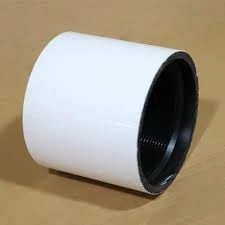- Afrikaans
- Albanian
- Amharic
- Arabic
- Armenian
- Azerbaijani
- Basque
- Belarusian
- Bengali
- Bosnian
- Bulgarian
- Catalan
- Cebuano
- Corsican
- Croatian
- Czech
- Danish
- Dutch
- English
- Esperanto
- Estonian
- Finnish
- French
- Frisian
- Galician
- Georgian
- German
- Greek
- Gujarati
- Haitian Creole
- hausa
- hawaiian
- Hebrew
- Hindi
- Miao
- Hungarian
- Icelandic
- igbo
- Indonesian
- irish
- Italian
- Japanese
- Javanese
- Kannada
- kazakh
- Khmer
- Rwandese
- Korean
- Kurdish
- Kyrgyz
- Lao
- Latin
- Latvian
- Lithuanian
- Luxembourgish
- Macedonian
- Malgashi
- Malay
- Malayalam
- Maltese
- Maori
- Marathi
- Mongolian
- Myanmar
- Nepali
- Norwegian
- Norwegian
- Occitan
- Pashto
- Persian
- Polish
- Portuguese
- Punjabi
- Romanian
- Russian
- Samoan
- Scottish Gaelic
- Serbian
- Sesotho
- Shona
- Sindhi
- Sinhala
- Slovak
- Slovenian
- Somali
- Spanish
- Sundanese
- Swahili
- Swedish
- Tagalog
- Tajik
- Tamil
- Tatar
- Telugu
- Thai
- Turkish
- Turkmen
- Ukrainian
- Urdu
- Uighur
- Uzbek
- Vietnamese
- Welsh
- Bantu
- Yiddish
- Yoruba
- Zulu
Understanding the Key Distinctions Between Casing and Tubing in Oil Wells
Differences Between Casing and Tubing in Oil and Gas Production
The oil and gas industry relies heavily on a variety of equipment and materials to ensure successful drilling and production operations. Among the most critical components of well construction are casing and tubing. Although these two elements serve distinct functions, they are often confused due to their similarities in appearance and physical properties. This article will explore the key differences between casing and tubing, highlighting their roles, materials, diameters, and installation processes.
Definition and Purpose
Casing is a series of pipes that are placed in the drilled hole to stabilize the wellbore, prevent it from collapsing, and protect groundwater from contamination. It forms the structure of the well and aids in managing pressure. Typically, casing is installed after the drilling phase, ensuring that the well is secure and environmentally safe.
On the other hand, tubing is a smaller diameter pipe that is inserted within the casing. Its primary purpose is to transport hydrocarbons from the reservoir to the surface. Tubing is designed to withstand the pressure of the produced fluids and gas, making it essential for the completion of the well.
Diameter and Wall Thickness
One of the most apparent differences between casing and tubing is their size. Casing generally has a larger diameter — often several inches to over a foot — depending on the depth of the well and the specific design needed for that project. This larger diameter allows for more substantial structural support to minimize the risk of collapse.
Conversely, tubing has a smaller diameter than casing. The diameter of tubing can vary, but it is typically less than half the size of the casing. This size difference is crucial, as the tubing must fit snugly within the casing while still allowing sufficient space for the transportation of oil and gas.
Furthermore, the wall thickness of casing is generally greater than that of tubing. The increased wall thickness of casing provides the structural strength required to withstand external pressure, particularly in deep wells where pressures increase significantly with depth. In contrast, tubing is designed to be more flexible and lighter, as it is primarily tasked with transporting fluids rather than providing structural support.
what are the differences between casing and tubing?

Materials and Corrosion Resistance
Both casing and tubing are commonly made from carbon steel or high-strength alloy steel, which provides the necessary strength for underground conditions. However, they are often treated differently to account for various environmental conditions. Casing may be coated or treated with anti-corrosion materials to handle exposure to aggressive formations and prevent premature failure.
In contrast, tubing must be designed to withstand the corrosive nature of the produced fluids, which may contain hydrogen sulfide, carbon dioxide, and other aggressive compounds. Hence, tubing often employs corrosion-resistant alloys or specialized coatings to enhance its longevity and performance.
Installation and Costs
The installation process of casing and tubing differs as well. Once the drilling is complete, casing is set into the wellbore and cemented into place to create a secure environment. The cementing process is crucial, as it creates a seal that further stabilizes the casing and prevents fluid migration.
After casing installation, tubing is inserted into the casing. This process is generally faster and requires less equipment than casing installation, as tubing installations do not require cementing. This difference in installation processes can also influence overall costs; casing installation tends to be more complex and expensive than tubing installation.
Conclusion
In summary, while casing and tubing may appear similar, they serve distinct and critical roles in the oil and gas industry. Casing provides the structural framework and protection for the wellbore, while tubing is responsible for the safe transport of hydrocarbons to the surface. Understanding the differences in their design, diameter, materials, and installation processes is essential for engineers and technicians involved in well construction and production. Ensuring proper selection and installation of both casing and tubing is vital for the efficiency and safety of oil and gas operations, ultimately impacting the success of the project.
-
Tubing Pup Joints: Essential Components for Oil and Gas OperationsNewsJul.10,2025
-
Pup Joints: Essential Components for Reliable Drilling OperationsNewsJul.10,2025
-
Pipe Couplings: Connecting Your World EfficientlyNewsJul.10,2025
-
Mastering Oilfield Operations with Quality Tubing and CasingNewsJul.10,2025
-
High-Quality Casing Couplings for Every NeedNewsJul.10,2025
-
Boost Your Drilling Efficiency with Premium Crossover Tools & Seating NipplesNewsJul.10,2025







